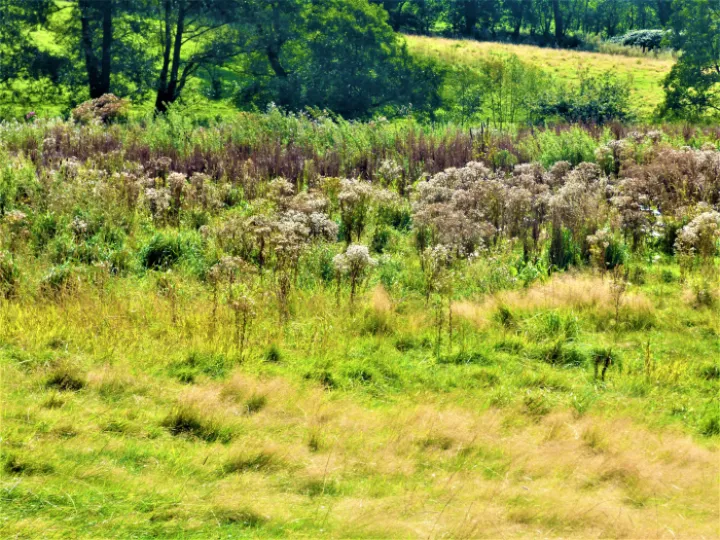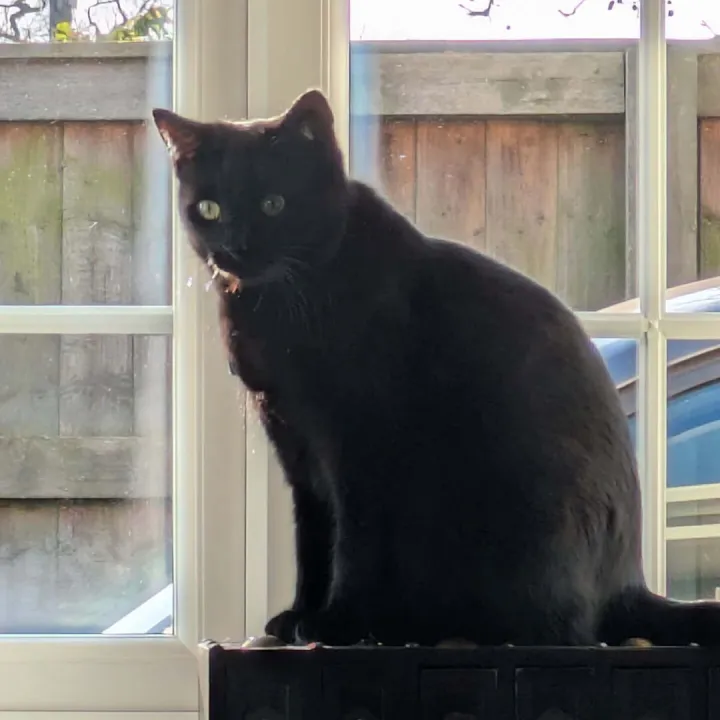



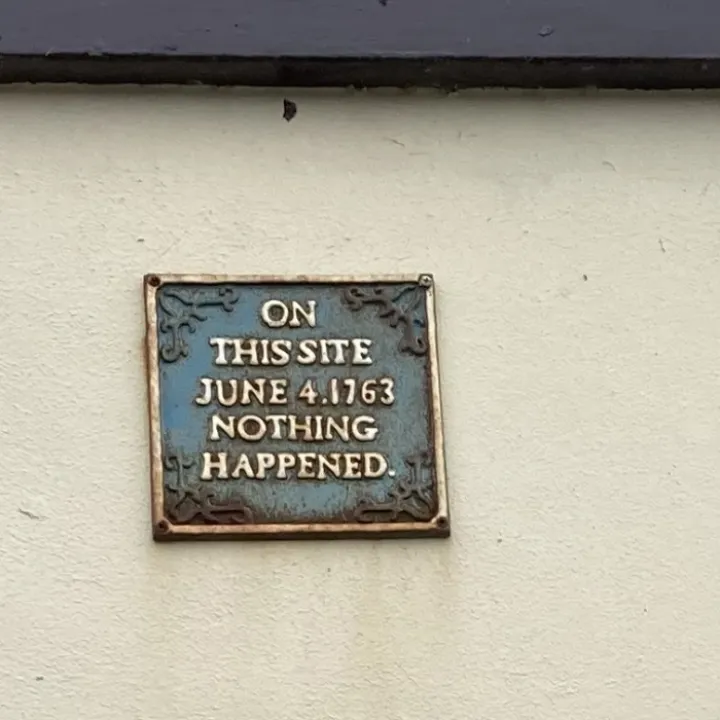



We have felt the verdaning** promises of Spring, we have revelled in the glories of Summer and now the natural circle takes us into the mellowing spirit of Autumn. Already Turnpike Fields display a disconcerting drabness which might be called messiness . Long before we are ready to accept the inevitable longer nights and colder days, the natural world around us has begun the next phase of the yearly cycle. Our summer visiting birds are also mostly well on their way to winter homes (except for a few late-leaving young swallows) and it will be a month or two before our winter visitors of Redwing and Fieldfares start their chat in the hawthorn bushes gorging on the red berries or Goosanders ply the canal fishing. Our green fields have turned brown and left us with a sense of empty drabness. And as someone once said to me "We don't do brown"!
In nature it seems the colour of lifelessness and we look with longing for the vibrancy of past seasons.
Yet the natural world DOES do brown! For while be associate it with decay and futility, which makes our human instincts want to tidy it all up, for the plant world it is the stuff which will produce next year's life. If we ever wanted an example of how to recycle here it is. The seeming lifeless stems, leaves and branches contain all the food for next years growth and glory. The forgotten sustainers of our nourishment which live in the earth – the worms and other creepy crawlies will over the next few months be at maximum activity enriching the soil for next year. This is the unseen world that sustains ours. As this process goes on, much of the natural world is taking its rest something us humans tend to forget, yet which the corvid situation has helped us begin to appreciate. It shows us that the natural rhythm is not one of constant activity.. The trees, plants and other creatures that have given us so much solace and pleasure over the past months in the Fields now ask us to appreciate them in a different way. We have the privilege in Turnpike Fields to be witnesses to it. The thing is that we may not like it but as someone once wrote " you cannot have the rose without the thorn".
Over the past ten or so years there has been developing a new approach to environmental understanding which is now finding itself as mainstream. That is if the wildlife organisations and TV programmes about wildlife, gardening and the countryside are an accurate guide. The popular term used to describe this approach is "Wilding". It respects the ability of the natural world to handle its own affairs and recognises that it has its own incredible ability to bring balance, restoration and growth with the minimum amount of human intervention and management. Of course it is uncomfortable fact that is human intervention that causes many of the anxieties around an incredible loss of number of insects of all kinds, animals, birds and reptiles which are native to our land. Some of that is inevitable as they share the land with us humans with the conflict of interests that follow.
There was a time and probably not too long ago when the land was seen to be the possession of human beings alone and old habits and thinking is slow to change. With the Fields having moved out of being a place for food production it can have a role that more truly reflects a different partnership between wild life and humans which truly benefits both. During the covid crisis, we have seen on the Turnpike Fields what can happen when human beings don't interfere.
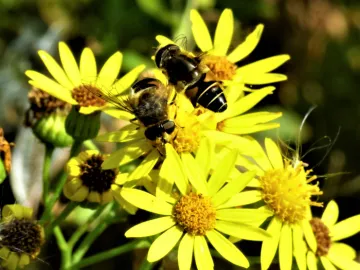
I don't think it is just me that has been surprised and amazed at the richness that has arisen as different parts of the natural world have been able to work unhindered. Nature has been allowed to thrive and with it has brought a re creative sustenance to us humans in these troubled times. I never imagined nine months ago that we would be able to record 110 different species of wild flower and plants, that does not include 15 species of grasses; 14 species of Butterfly, 6 species of moth, 5 species of Bee, 5 species of grasshopper and cricket feeding on numerous flowers. With several animals, birds and reptiles also recorded that is quite a list for our first year. There is scope for discovering much more in the future.
What has also become clear is that different species prefer different habitats. The Fields provide us with at least six, from open grassland, to Floating Bog, riverside, pond, hedgerow and the most exciting and surprising of all the old spoil heap now termed "The Mound" which nature has wondrously reclaimed for its own and now contains the rich mixture of 33 recorded species of flowering plants which bees and butterflies have thrived on and is a home to field voles and other creatures.
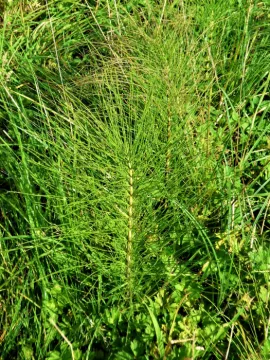
One plant that is fresh and bright at the moment is Marsh Horsetail also known as Snake Grass or Puzzle Grass and not to be confused with Mare's Tail. Fading into the background because of its unpretentious form, its ancestors go back 100 million years. It can be seen below the mound in the top field as well as other damp places. It, like so many other plants, has both healing and nutritional properties known through the centuries.
.With all this glorious life around us perhaps we can put up with a little bit of nature's messiness. After all messiness can be good and is essential for creativity!
Adrian Leighton
{**Ed – We cannot find the word "verdaning" in any online dictionary – perhaps it is a cross between verdant and burgeoning, and if so describes its meaning perfectly!
}
Get In Touch
AudlemOnline is powered by our active community.
Please send us your news and views using the button below:
Email: editor@audlem.org

